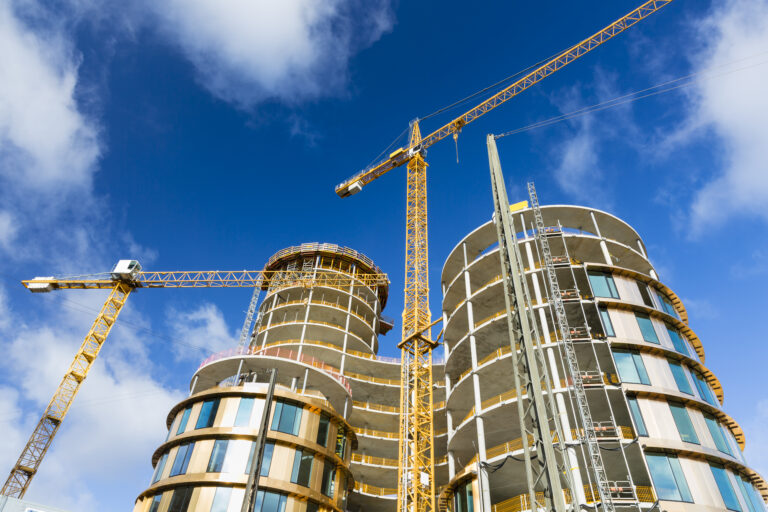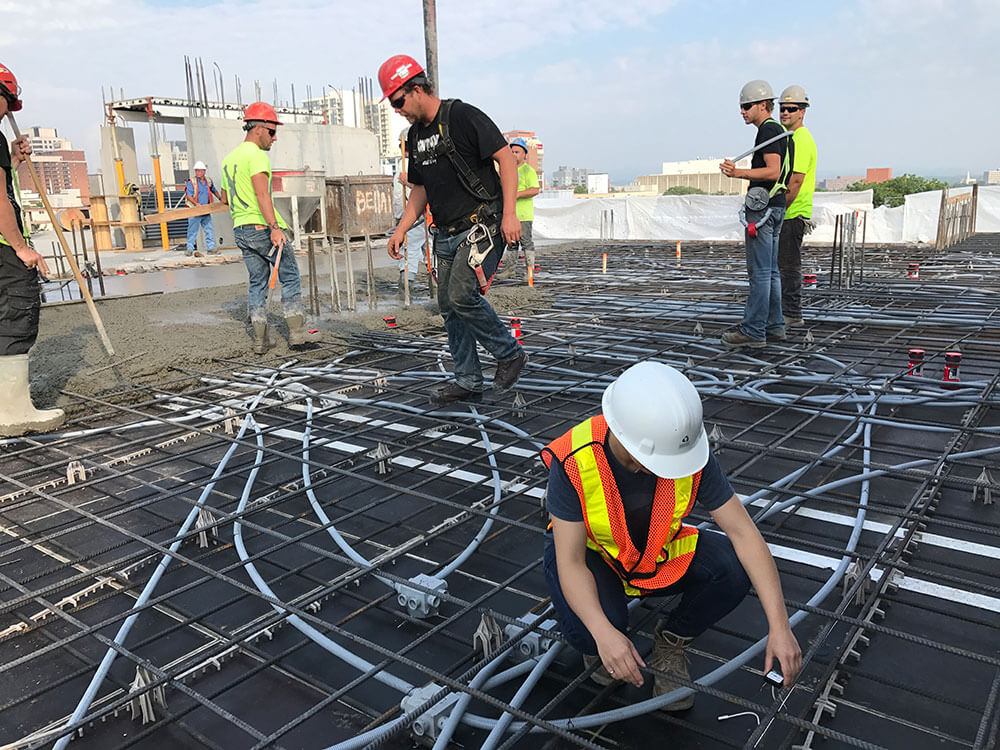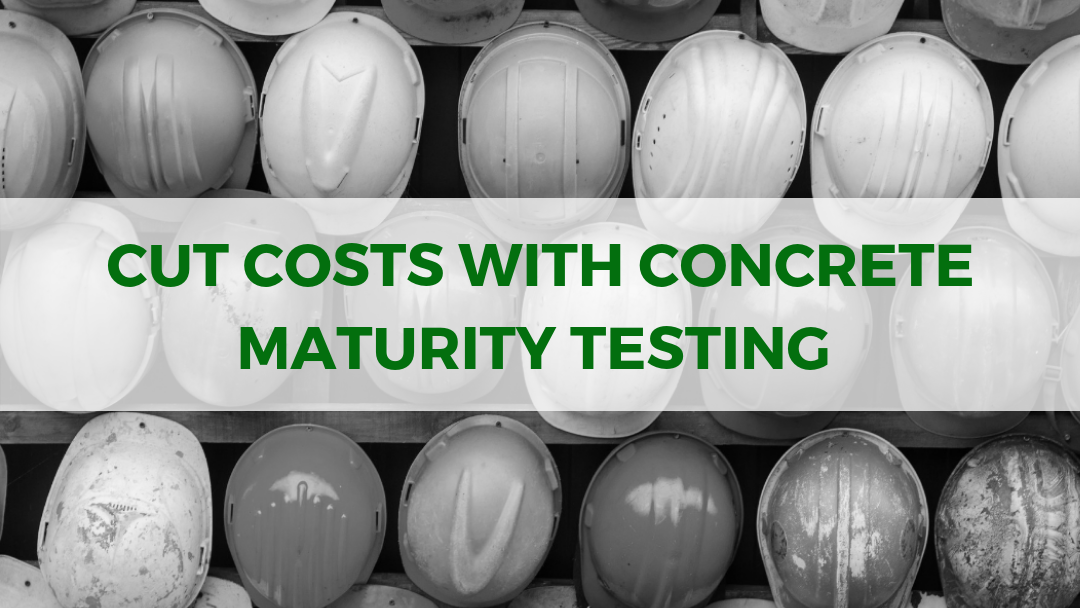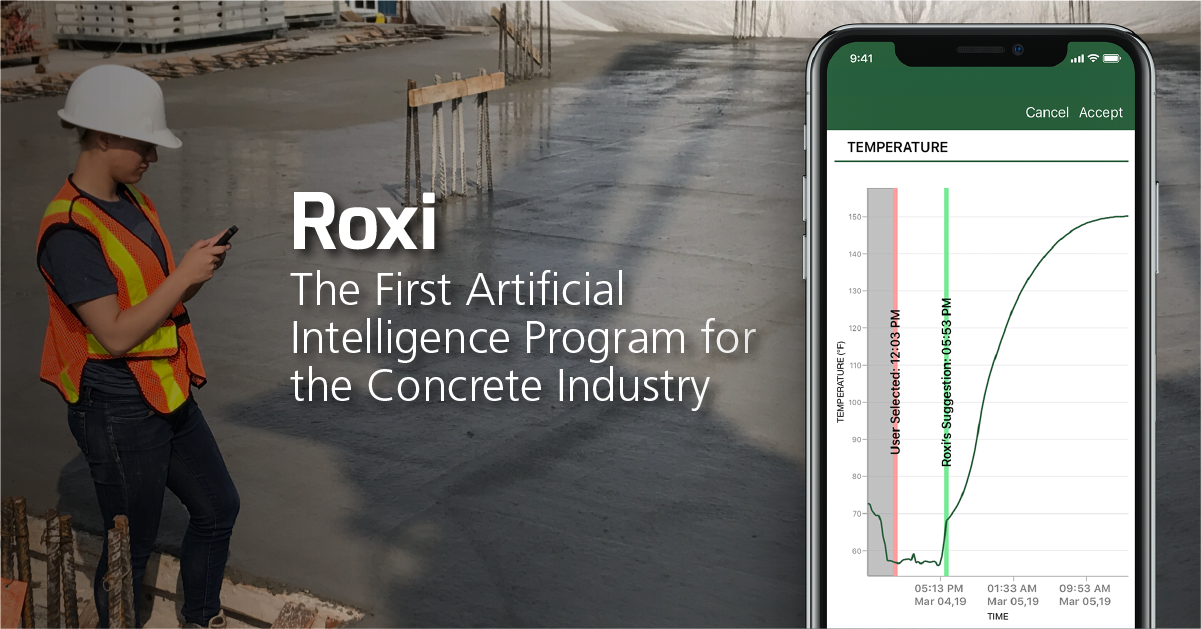The construction industry is undergoing a tech-driven transformation as artificial intelligence (AI) becomes an integral part of how we build. Long-standing challenges, from skilled labour shortages to safety risks and slim profit margins, are driving firms to adopt AI solutions to gain a competitive edge.
Biggest SmartRock® Savings of the Year are Here!
In fact, 92% of contractors report difficulty filling open positions, contributing to project delays. Meanwhile, AI adoption is surging; 74% of AEC leaders now use AI in at least one phase of construction projects. The market for AI in construction is projected to grow from $3.99 billion in 2024 to $11.85 billion by 2029, a clear sign that AI’s impact is accelerating.
In this blog, we’ll explore the key challenges AI addresses that make building projects smarter and safer, and how these innovations lead to more profitable outcomes. From intelligent concrete sensors and robotic assistants to predictive software and AI-driven project dashboards, today’s construction professionals can leverage AI for tangible benefits.
Smarter Projects Through AI-Driven Insights and Analytics
Modern construction projects generate massive amounts of data: blueprints, schedules, weather logs, sensor readings, and more. AI turns this data into actionable intelligence to plan and build smarter than ever before.
Digital Twins and Generative Design
One major advance is in Building Information Modeling (BIM), enhanced by AI. Digital BIM models paired with AI allow teams to create “digital twins” of projects and simulate different scenarios in advance. This means potential design conflicts or scheduling issues are identified virtually, before they can cause costly rework in the real world. Better upfront planning with AI leads to projects that are less likely to face delays or budget overruns, since many problems are solved in advance.
Want to see how AI is transforming infrastructure? Read our blog on digital twins and predictive maintenance!
Predictive Scheduling and Resource Optimization
Predictive scheduling is another way AI makes construction smarter. Instead of reactive planning, AI analyzes historical project data and real-time inputs (like weather forecasts or supply chain info) to forecast potential delays weeks in advance. Project managers can proactively reschedule tasks or adjust resources to keep the project on track. These AI-driven schedule adjustments help avoid the domino effect of unexpected holdups, ultimately saving time and money.
Real-Time Insights from IoT and Concrete Sensors
The combination of IoT sensors and AI analytics is transforming how teams monitor materials like concrete. Wireless sensors like Giatec SmartRock® embedded in concrete continuously monitor in-situ conditions (temperature, strength gain, curing progress) in real time. This constant data stream gives project teams immediate insights to adjust curing or optimize mix designs, ensuring quality targets are met without guesswork. The real advantage comes when AI platforms analyze this sensor data alongside thousands of records. For instance, Giatec SmartMix™, powered by the AI assistant Roxi™, compares concrete data to historical mix performance. It can recommend mix adjustments on the fly for optimal strength and efficiency. By learning from vast data, AI helps deliver stronger concrete with less cement, cutting material costs and carbon footprint at the same time.

For example, Trio Ready-Mix implemented SmartMix and was able to reduce cement by 50 kg per batch initially, and within months, saved about $3 per cubic meter on average across many mixes, a significant boost in profitability and sustainability.
Want to explore the future of building? Check out our Construction Outlook: Construction Technology Solutions and Innovations!
AI-Driven Construction Management
Beyond concrete, AI is also revolutionizing project management. These platforms integrate scheduling, budgeting, and field data into one dashboard, often with AI algorithms highlighting risks or inefficiencies. By centralizing information, managers get a “big picture” of the project in real time. For example, leading construction management software has helped users achieve a 26% reduction in safety incidents and a 22% decrease in lost workdays by improving visibility and decision-making. A manager might receive an AI alert that a particular activity is lagging behind schedule (based on comparison to thousands of prior projects), prompting action before a delay cascades.
By harnessing these capabilities, construction firms can overcome the complexity of modern projects. In an industry where profit margins are tight and room for error is small, AI’s data-driven approach provides a significant competitive advantage. Smarter planning and execution mean fewer surprises in the field, more efficient use of resources, and higher confidence that projects will meet their targets.
Protecting Workers with AI-Powered Technology
Construction sites are inherently hazardous, but AI is transforming safety by detecting risks faster than human supervisors and helping keep workers out of harm’s way. AI-powered computer vision, drones, and robotics monitor unsafe conditions, perform inspections in dangerous areas, and take over high-risk tasks, reducing human exposure. Wearable AI devices track vital signs, posture, and location, alerting workers to fatigue, heat stress, or hazardous zones. Predictive safety analytics further anticipate potential incidents based on historical data, weather, and site activity, allowing companies to prevent accidents before they occur.
These advancements are yielding measurable improvements. Construction firms that have embraced AI-based safety systems have seen significant drops in injury rates and lost-time incidents. Safer sites also mean higher productivity when workers feel protected and incidents are minimized, work can proceed without disruptive stoppages.
Curious how AI is keeping construction sites safer? Read our full blog on Why Construction Site Safety Should Go Beyond Compliance.
More Profitable Building with AI Efficiency
Profit margins in construction are often thin, with unexpected costs and delays eating into earnings. AI is proving to be a game-changer for profitability by driving efficiency, reducing waste, and optimizing resource use in construction projects.
| Profitability Area | How AI Improves It | Key Benefits |
| Cost Savings & Error Prevention | AI-powered clash detection in BIM models identifies design conflicts (e.g., HVAC vs. rebar interference) before construction begins. Predictive AI scheduling tools forecast delays and recommend reallocation of crews and equipment. | Keeping projects on budget and on schedule. Prevents scheduling conflicts and idle labor. |
| Material Optimization & Waste Reduction | AI analyzes historical consumption data and project specs to predict exact material quantities and delivery schedules. It adjusts orders in real-time to match on-site progress. | Minimizes excess inventory and reduces waste. AI-driven cut pattern optimization for rebar and lumber reduces scrap material. |
| Equipment Efficiency & Predictive Maintenance | AI systems monitor sensor data from equipment (engine temperature, vibration, and usage hours) to predict when maintenance is due, before breakdowns occur. | Cuts downtime and extends asset life. Reduces unplanned repairs and emergency rentals. |
| Labor Productivity & Automation | AI scheduling tools assign tasks based on crew productivity data, weather forecasts, and project status. Computer vision and NLP automate reporting and timesheet entry. | Increases output per labor hour. Minimizes idle time between tasks. |
| Risk Reduction & Contingency Control | AI models assess real-time project data (weather, supply chain, safety compliance) to flag risks before they escalate. | Reduces contingency costs. Fewer safety incidents mean lower insurance premiums and fewer shutdowns. Enhances quality control to prevent costly legal claims. |
| Faster Project Delivery | By using AI for forecasting, sequencing, and supply chain optimization, project managers can compress schedules without compromising quality. | Shorter project durations lead to lower overhead and faster payment cycles. Improves cash flow and allows firms to take on more projects annually. |
| Enhanced Bidding & Estimating Accuracy | AI analyzes historical bid performance, market data, and regional material/labor rates to refine cost estimates. | Produces more accurate bids, reducing the risk of underpricing. Improves win rates by tailoring proposals to client priorities. Tools like Dodge Data’s Insight Platform use AI to benchmark estimates against similar projects. |
| Sustainability and ESG Value | AI integrates cost and carbon data, recommending lower-impact materials and optimized mixes. This drives both savings and environmental performance. | Reduces cement-related carbon emissions by up to 20%. Helps firms meet green building standards (LEED, Net-Zero). |
AI is protecting margins and unlocking new efficiencies in every area of construction. From predictive design to smart material ordering, AI in construction ensures every dollar and every hour is spent strategically. By cutting waste, improving accuracy, and enhancing sustainability, AI gives modern builders a tangible competitive advantage that improves profitability while advancing greener, safer construction practices.
Conclusion
In conclusion, AI in construction is driving a new era of construction that marries innovation with practicality. It’s practical, proven, and already delivering measurable benefits across the industry. From planning and scheduling to safety and sustainability, AI technologies are reshaping how projects are executed. By using AI for data-driven planning, risk monitoring, and resource management, construction teams reduce delays, improve safety, and operate more efficiently. Construction companies can build a future where projects are not only better for business but also better for people and the planet. Even mid-size contractors now have access to AI solutions that integrate seamlessly into workflows.
Get the scoop on how AI is revolutionizing construction projects. Listen to our podcast Unlocking AI’s Potential in Construction now!








